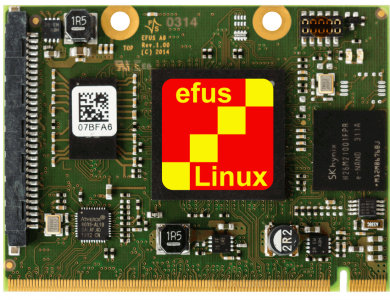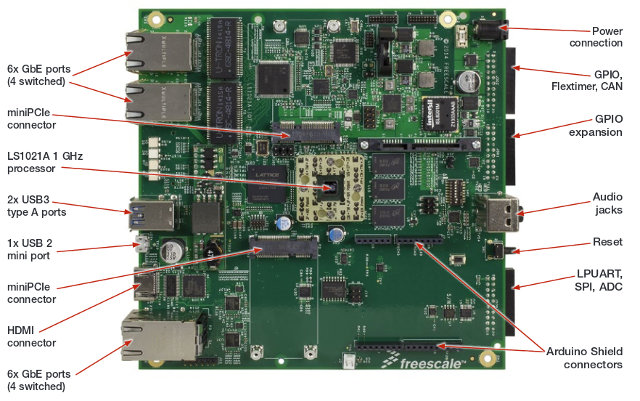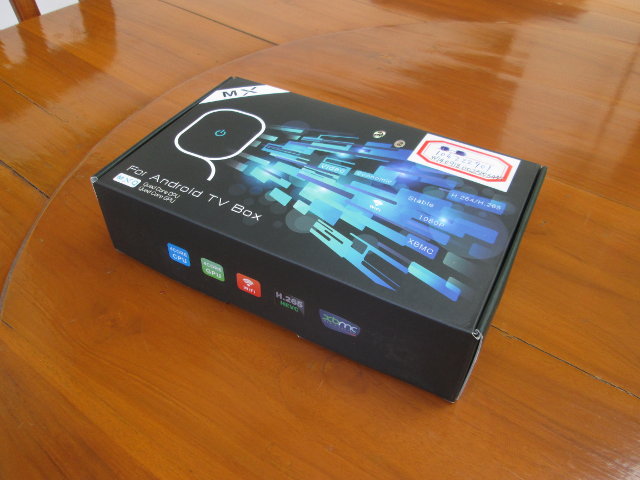ARM and MIPS are not the only games in town with it comes to 32-bit cores for micro-controllers. I’ve already written about Beyond Semiconductor, and mentioned Andes used in some Wi-Fi SoC, and today I’ve come across another IP company called Cortus. which just introduced APS23 and APS25 cores based on their latest Cortus V2 instruction set. which offers a smaller code footprint compared to there V1 ISA. APS23 can achieve 1.44 Coremarks/MHz, 2.83 DMIPS/MHz, and can run up to 200 MHz when manufactured with 90nm process, whereas APS25 is a bit more powerful with 2.09 Coremarks/MHz, 2.36 DMIPS/MHz, and can run up to 344 MHz. Minimal power consumption is 11.6 and 19.3 uW/Mhz for APS23 and APS25 respectively. Key features of both cores include: APS23 APS25 Excellent Code Density 3 stage pipeline 5-7 Stage Pipeline Sequential Multiplier High Performance Integer Multiply Optional Parallel Multiplier (Gives 2.62 Coremakes/MHz) Integer Divider Full Peripheral Set Dual […]
F&S Elektronik Systeme Introduces eFus A9 Industrial Computer Modules Powered by Freescale i.MX6 SoC
F&S Elektronik Systeme, a German embedded systems company, has announced their efus A9 Computers-on-Module (CoM) based on Freescale i.MX6, are now in mass production. The CPU comes in two variants A9V2 for i.MX6 Solo, and A9V3 with i.MX6 DualLite, both of which are certified for automotive and industrial applications, and support commercial, extended, and industrial temperature ranges. eFuse A9 computer-on-module specifications: SoC – CPU Freescale i.MX6 Solo (eFus A9V2) or DualLite (eFus A9V3) @ up to 1.2 GHz + Vivante 2D and 3D GPUs System Memory – 512MB (Up to 1GB RAM) Storage – 256 MB NAND flash (Up to 1GB), 2 GB eMMC (eFus A9V3 only. up to 32GB), optional SPI NOR, optional I2C EEPROM Display I/F – 18-bit RGB, 2x 24-bit LVDS, and DVI Other interfaces available via 230 pins MXM-2 edge connector: 2x SD card I/F 1x Gigabit Ethernet 1x USB Host, 1x USB Device 2x CAN […]
$25 TinyScreen is an OLED Display for TinyDuino Arduino Compatible Board (Crowdfunding)
Back in 2012, Tiny Circuits launched a Kickstarter campaign for TinyDuino, an Arduino compatible board that’s… tiny, based on Atmel Atmega328P, and supports tiny stackable shields in a similar fashion to Microduino (launched in 2013). The campaign was successful, and the company is now back on Kickstarter with TinyScreen, an OLED display that can be stacked on top of TinyDuino to create a smartwatch, a minuscule gamepad, smart glasses, and more. TinyScreen technical specifications: 96×64 OLED display, 16-bit color depth 0.96″ (24.4mm) viewable area Software controllable backlight (OLED brightness) Power down mode Four push buttons along the sides (connected to IO pins) SPI interface for display Power Supply – 3.0V to 5.5V operation (higher voltages supported with TinyShield power regulator) Power Consumption – 20 – 45mA max supply current (depending on brightness) Dimensions – 25.8mm x 25.0mm Programming of TinyDuino can be done through a web interface for Arduino called […]
MatchStick’s Firefox OS Firmware Ported to MK808B mini PC
MatchStick is an HDMI Stick running Firefox OS and designed to stream online video, mirroring browsers, etc.. which makes it very similar to a Chromecast, even using the same DIAL protocol. The hardware is based on Rockchip RK3066, and Mozilla released an SDK for the device. Since there are quite a few Rockchip RK3066 TV sticks out there, BalintBanyasz announced he ported MatchStick’s firmware to MK808B (with RK903 Wi-Fi module), and has now provided the firmware and instructions on Freaktab. The firmware is based on Linux kernel 3.0.36+ used in Android 4.2.2. Once you’ve flash the firmware (matchstick-flingone-b2g2.0-201409281739-mk808b.img.7z) to MK808B, and installed MatchStick app / add-on in your Android device or Firefox Browser (iOS app coming) soon, you can “fling” a YouTube video from your phone / browser to your TV through MK808B as follows: Open MatchStick app on your phone in order to detect the hotspot (MatchStickXXXX) created by […]
Freescale LS1021A-IOT IoT Gateway Reference Design Powered by QorIQ LS1021A Dual ARM Cortex A7 SoC
Freescale has just launched a an IoT gateway reference design powered by their QorIQ LS1021A communication processors running Linux/OpenWRT, designed in partnership with TechNexion, and targeting various IoT applications such as building/home management, smart cities, networked industrial services, etc… Beside the dual core Cortex A7 QoirIQ processor, the board features six Gigabit Ethernet ports, two USB 3.0 ports, a SATA 3 port, two mini PCIe connector, an LVDS interface, HDMI output, Arduino UNO compatible headers, and various others expansions headers. LS1021A-IOT IoT gateway Specifications: SoC – Freescale QorIQ LS1021A dual core Cortex A7 communication processor @ 1 GHz (5,000 coremarks) MCU – Freescale Kinetis K20 Cortex M micro-controller System Memory – 1 GB DDR3L Storage – 1 Gb QSPI NOR Flash, SDHC slot (up to 32 GB) populated with a 4GB SD card, 1x mSATA 3 slot Connectivity – 6x Gigabit ports via SGMII (Serial Gigabit Media Independent Interface) and […]
Can Rockchip RK3288 Android TV Boxes Play Videos at True 4K UHD / 2160p Resolution?
[Update 2: Now that I have a 4K TV, I’ve redone the test myself, and Rockchip RK3288 can play 4K videos properly. The mistake was to use Software decode in MX Player which renders to the framebuffer instead of the video buffer. Visit the post entitled 4K Output and Video Playback Capability Tested on 6 ARM based mini PCs and Boards for details.] [Update 1: The post has now been updated, after it was clear one of MX Player options was misunderstood. The conclusion remains the same] Over the last few years there have been complains about Android TV boxes decoding 1080p video, rendering them to a 720p frame buffer, and upscaling them back to 1080p resolution for video output, so you ended up playing 1080p videos at a real 720p resolution. I never investigated the issue in details, and thanks to new media players now coming with a 1080p […]
KDDI Unveils Tiny BLE/Zigbee Development Board Running Mozilla Firefox OS
KDDI has recently announced Open Web Board, an HDMI TV stick powered by Rockchip RK3066, and running Firefox OS, just like the recently announced MatchStick. The board is however aimed at embedded and web developers who want to create apps for Firefox OS, and interface with external devices over Bluetooth Low Energy or Zigbee (optional module) communication, optionally using Gluin, a web based graphical “application development tool that enables simple linking programming between electronic devices”. Open Web Board specifications: SoC – Rockchip RK3066 dual core Cortex A9 processor @ 1.6 Ghz with Mali-400 MP4 GPU System Memory – 1 GB RAM Storage – 8 GB flash Video Output – HDMI USB – 1x USB 2.0 host port, 1x micro USB for power Connectivity – 802.11 b/g/n Wi-Fi (AP6210 module), Bluetooth 2.1 (HFP/A2DP/AVRCP)/4.0 GATT. and optional Zigbee via external module Dimensions – Small This dongle runs Firefox OS 1.4. KDDI showcased […]
Unboxing of MXQ S85 Android Media Player Powered by Amlogic S805 Processor
Gearbest sent me MXQ S85 Android media player powered by Amlogic S805 quad core processor with 1GB RAM, 8GB internal storage, and Ethernet/Wi-Fi/Bluetooth connectivity. MXQ S85 looks very similar to EM6Q-MXQ, another Amlogic S805 based Android STB, which I reviewed last week, but these are two distinct hardware platforms. Today, I’ll take some pictures of the devices, and the board to see which components are used, and who made the board, and I’ll write a full review in a few days. MXQ S85 Pictures I’ve received the parcel via DHL in the nameless package below where they just indicate it’s and Android TV box with a quad core processor, quad core GPU, pre-loaded with XBMC, and supporting HEVC / H.265 The package contains the box, HDMI and AV cables, an OTG adapter, a 5V/2A power supply, an IR remote requiring two AAA batteries, and a user’s manual in English. The […]










